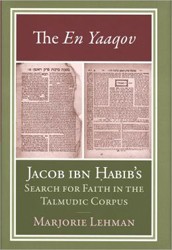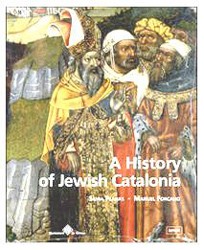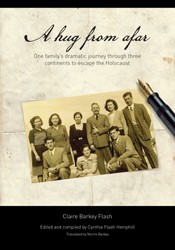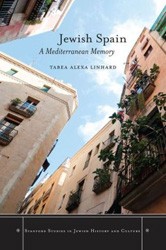This impressive new study is an examination of a portion of a Sephardic illuminated Masoretic Bible completed, according to the colophon, in 1477. Transcribed by Moshe Ibn Zabara, it was later heavily glossed by Menahem b. Judah de Lonzano (ca. 1555-ca. 1624). Jordan S. Penkower and his associates — Andreina Contessa, who examined the decorations, and Tamar Leiter and Shlomo Zucker, who described the palaeography — conclude that the copying of this Pentateuch was an early scribal creation of Moses Ibn Zabara, possibly produced prior to 1476: the text was transcribed in a lighter shade of brown ink than the scribe used in later works; moreover, the work differs from his later works in the script and in one form of the Tetragrammaton.
The main focus of this monograph, however, is the life and work of Menahem de Lonzano — in particular the text-critical glossing of the Zabara codex, which Lonzano carried out a century later. Through painstaking effort over many decades, Penkower was able to track down a number of the books both in manuscript and printed form once held and glossed by Lonzano. This enabled him to compare, analyze, and detail the glosses found in Zabara’s work.
Accustomed as he was to glossing texts, Lonzano was eager to examine the Zabara Bible, a text which was by then distinguished as being a highly accurate Bible, examining the text and the masorah (“tradition”) with great care. Penkower asserts that Lonzano’s rigor and precision in evaluating the text can probably be explained : “… in light of the project that Lonzano was planning — a careful correction of the Bible text: spelling, vocalization and accentuation, as well as the categories of songs and the open and closed sections.” Lonzano worked by comparing the Zabara text to the Aleppo Codex. Based on his comparison, Lonzano concluded that in the case of the Pentateuch, Zaabara’s text tended to be highly accurate, but in the case of the Prophets and the Hagiographa the comparisons suggested that the Zabara text (as well as several other texts which Lonzano examined) were not as accurate as the Aleppo codex. An impressive work, illustrated with approximately 150 color photos of micrography, Penkower’s volume should appeal to a broad audience, from those studying Renaissance and early modern Jewish history to those seeking knowledge of Biblical text criticism and history of the Book.
Related Content:





